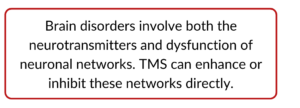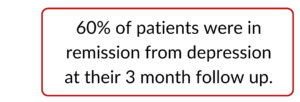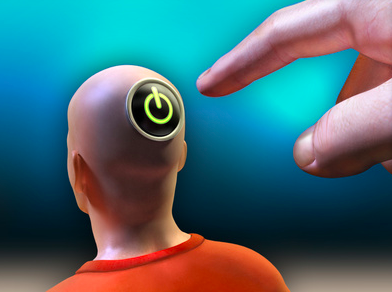Stacey Colino discusses the increasing use of transcranial magnetic stimulation (TMS) for a variety of disorders!
https://health.usnews.com/health-care/patient-advice/articles/2017-10-11/rebooting-the-brain-with-transcranial-magnetic-stimulation
For many, placing your head against a device and pushing a button to zap away symptoms sounds like something from a science fiction novel. However, TMS has been approved by the Food and Drug Administration (FDA) for over a decade now for the treatment of major depressive disorder (MDD). It is now finding other uses, including for obsessive compulsive disorder (OCD), pain, seizures, addictions, posttraumatic stress disorder (PTSD), and bipolar disorder. Given this is a noninvasive technique and can be done in an office, there are many advantages to this technology.
 Her article discusses how one patient got TMS therapy for depression. She also had it applied to aim the pulses to inhibit pain signaling in her sensory cortex and was quite pleased with the relief. Dr. Joan Camprodon-Gimenez is an assistant professor at Harvard Medical School and directs the department of neuromodulation at Mass General Hospital. She discusses that the brain is not just neurotransmitters, but also an electric organ. Brain disorders involve both the neurotransmitters and dysfunction of neuronal networks. TMS allows us to enhance or inhibit certain networks directly, allowing us to modulate the symptoms at some of their underlying causes. What is more interesting is that each part of the brain is interconnected. In depression, even if we primarily directly stimulate the dorsolateral prefrontal cortex, as those neurons fire, they excite other neurons, creating a chain of events and allowing for stimulation of deeper structures all the way down to the limbic system.
Her article discusses how one patient got TMS therapy for depression. She also had it applied to aim the pulses to inhibit pain signaling in her sensory cortex and was quite pleased with the relief. Dr. Joan Camprodon-Gimenez is an assistant professor at Harvard Medical School and directs the department of neuromodulation at Mass General Hospital. She discusses that the brain is not just neurotransmitters, but also an electric organ. Brain disorders involve both the neurotransmitters and dysfunction of neuronal networks. TMS allows us to enhance or inhibit certain networks directly, allowing us to modulate the symptoms at some of their underlying causes. What is more interesting is that each part of the brain is interconnected. In depression, even if we primarily directly stimulate the dorsolateral prefrontal cortex, as those neurons fire, they excite other neurons, creating a chain of events and allowing for stimulation of deeper structures all the way down to the limbic system.
The goal is that this stimulation will help neurons run circuits with greater efficiency, restore circuits, and make new and more therapeutic neuronal connections. There is still ongoing data being collected about how long lasting the relief is. But one study in 2012 found 60% of patients in remission from depression at the 3 month follow up. In addition, mild to moderate cases of depression tend to respond better than more severe cases.  However, each individual is different and there are growing cases of severe cases of depression that did not respond to electroconvulsive therapy (ECT) but did respond to TMS.
However, each individual is different and there are growing cases of severe cases of depression that did not respond to electroconvulsive therapy (ECT) but did respond to TMS.
In very general terms, high frequency magnetic fields tend to enhance activity in the neurons while low frequency fields dial down activity. In depression, areas of the brain can be underactive and benefit from higher frequency treatment. But in certain anxiety disorders, PTSD, or pain disorders, lower frequency can help dial down hyperactive connections.
People generally notice response by the end of the 3rd week of treatment. But some respond late, some early, and some not at all. However, for most patients, ongoing proactive treatment is recommended, which includes a multi-pronged approach involving often medications, therapy, and a health lifestyle to potentiate the benefits. But with TMS, there is also fortunately no limit to the number of sessions that can be delivered, meaning a patient can present for a repeated course of treatment.

